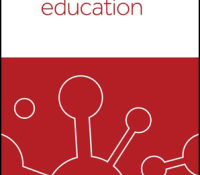tandfonline.com har udgivet en rapport under søgningen „Teacher Education Mathematics‟: An analysis of the forms of teacher-student dialogue that are most productive for learning Link til kilde
Like this:
Like Loading...
tandfonline.com har udgivet en rapport under søgningen „Teacher Education Mathematics‟: Abstract Formulae display:?Mathematical formulae have been encoded as MathML and are displayed in this HTML version using MathJax in order to improve their display. Uncheck the box to turn MathJax off. This feature requires Javascript. Click on a formula to zoom. Abstract Drawing on Critical Friendship as a theoretical base, an investigation was carried out to find out what components of teacher-student relationship would make a difference in the performance in mathematics of the eleventh graders in the Cape Coast Metropolis. A sample size of 2,575 students was randomly chosen to fill a questionnaire on teacher-student relationship and write an achievement test in mathematics. Findings revealed that trust, fear and lack of respect negligibly and statistically correlated with achievement scores;… Continue Reading →
Like this:
Like Loading...

tandfonline.com har udgivet en rapport under søgningen „Teacher Education Mathematics‟: ABSTRACT ABSTRACT This study focuses on the quality of teacher–student interactions and feedback in teaching English as a foreign language (EFL). Data consisted of 65 video-recorded lessons from 13 classrooms in two lower-secondary schools, and were coded with Classroom Assessment Scoring System–Secondary. Four cases were selected and analysed for feedback practice based on teachers’ use of first language (L1: here, Norwegian) and target language (L2: here, English) in EFL lessons. Teacher–student interactions were characterised by mid quality of emotional support and high quality of classroom organisation, but relatively low quality of instructional support. The results revealed an interdependence between quality of feedback and instructional dialogue, yet there appeared to be difficulties in supporting students’ internal feedback and self-regulation. Engaging in extended… Continue Reading →
Like this:
Like Loading...
eric.ed.gov har udgivet: Teacher’s gaze communicates consciously and unconsciously her pedagogical priorities to the students. By creating and responding to eye contact initiatives, people can communicate both status and affection. This research explores the frequency of teacher-student eye contacts and their connection to teachers‛ scaffolding intentions. The data consisted of mobile gaze tracking recordings of two teachers and stationary classroom videos during three collaborative mathematical problem-solving lessons. The quantitative analysis showed that most of the teacher gazes on student faces did not lead to dyadic eye contacts and those gazes that did, occurred often during affective and cognitive scaffolding. These results offer us novel and important insight in the nonverbal part of scaffolding interaction. Link til kilde
Like this:
Like Loading...


